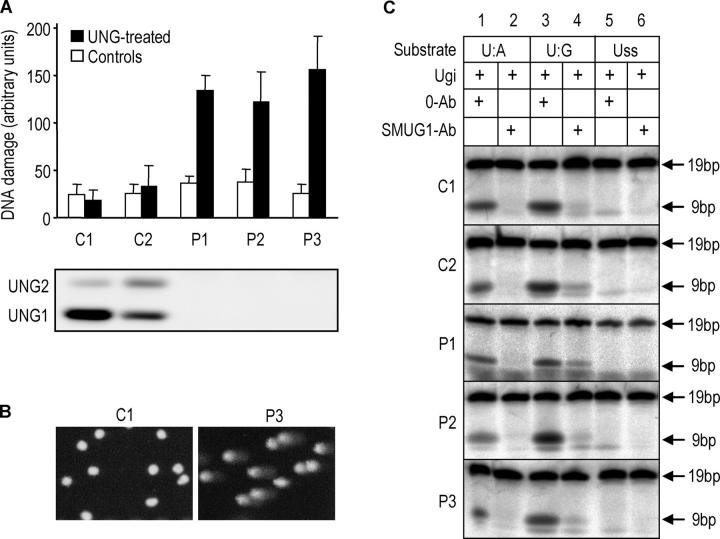Figure 4.
Steady-state genomic uracil levels are increased in LCLs from UNG mutant patients; thus, SMUG1 or other UDGs cannot compensate for UNG deficiency. (A) Single cell gel electrophoresis (comet assay) of alkali-treated cells. Each of the comets was assigned a score for the level of apparent DNA damage (given as arbitrary units, see Materials and methods). Cells were treated with recombinant UNGΔ84 before electrophoresis (black bars) or with buffer alone (open bars). Error bars represent the standard deviation calculated from four independent experiments (each in duplicate). Immunoprecipitation and Western blot analysis of UNG and SMUG1 from the whole cell LCL lysates are shown below. (B) Photomicrographs illustrating results from the comet assay. C1 and UNG mutant P3 cells are representative for all cell lines in the respective groups. (C) SMUG1 or other UDG activities are not up-regulated in UNG-deficient LCLs. Nuclear extracts (2 μg protein) from UNG-proficient (C1, C2) and UNG-deficient (P1, P2, P3) LCLs were preincubated with 10 ng Ugi and subjected to analysis using low turnover activity assays using 0.2 pmol (0.02 μM) [33P]-labeled19-mer deoxyoligonucleotide with uracil in U:A, U:G, or Uss contexts. In addition, either 0.5 μg preimmune IgGs (0-Ab) or neutralizing anti-hSMUG1 IgGs (SMUG1-Ab) were added to the extracts.

